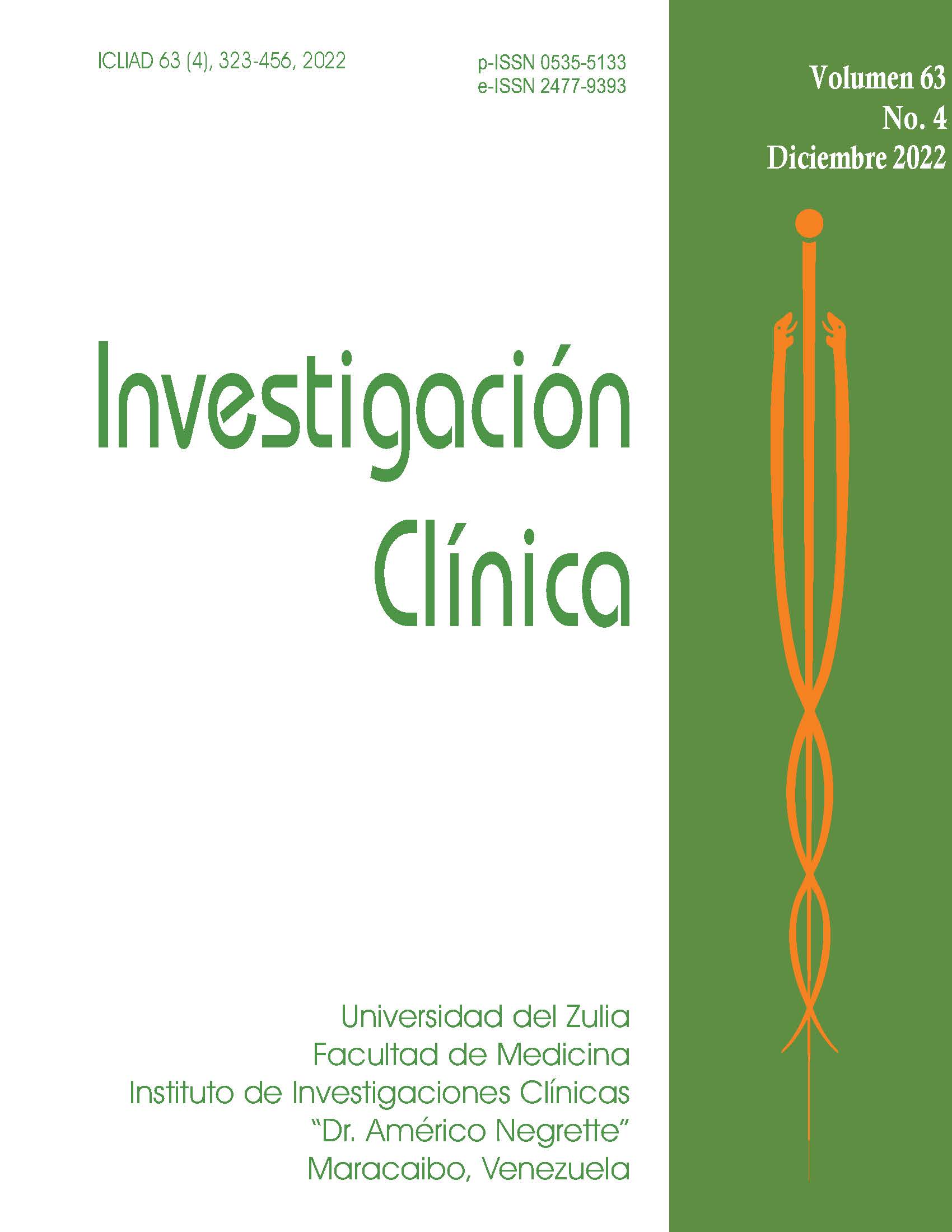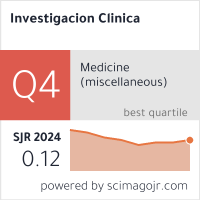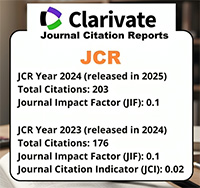The effect of varied exercise intensity on antioxidant function, aortic endothelial function, and serum lipids in rats with non-alcoholic fatty liver disease.
El efecto del ejercicio de intensidad variada sobre la función antioxidante, la función endotelial aórtica y los lípidos séricos en ratas con enfermedad del hígado graso no alcohólico.
Abstract
This study aimed to compare the effects of diet and exercise of different intensities on antioxidant function, aortic endothelial cell function and serum lipids in NAFLD (nonalcoholic fatty liver disease) rats. Fifty Sprague-Dawley (SD) rats (180-220g) were randomly divided into two experimental groups and fed either a standard rodent chow diet (CON; n=10) or a high-fat diet (HFD; n=40). After 16 weeks, the animals that received the HFD were randomly separated into a high-fat control group (HFC; n=10) or three exercise training groups: HFD and low-intensity exercise (LE; n=10), HFD and moderate-intensity exercise (ME; n=10), and HFD and incremental intensity exercise (IE; n=10). These experimental rats keep sedentary or trained for the next six weeks. A detection kit was used to detect nitric oxide synthase (NOs), nitric oxide (NO), malondialdehyde (MDA) and other markers of aortic oxidative stress. The expression levels of endothelial nitric oxide synthase (e-NOS) and endothelin-1 (ET-1) were detected by immunohistochemistry. TC, TG, and other lipid metabolism parameters were detected by an automatic analyzer. Exercise with different intensities could improve lipid metabolism, enhance antioxidant function, reduce MDA (P<0.01), increase NO (P<0.01), and improve the expression of e-NOS and ET-1 (P<0.01) protein levels in NAFLD rats. Decreased blood lipids were exhibited in all exercise groups. Notably, the moderate-intensity exercise demonstrated more effect on increasing glutathione (GSH) contents (P<0.01) and decreased the expression of ET-1 protein levels (P<0.01). The results showed that exercise at different intensities improved lipid metabolism and enhanced anti-oxidation function. Moderate exercise could improve the function of aortic endothelial cells.
Downloads
References
Mahady SE, George J. Exercise and diet in the management of nonalcoholic fatty liver disease. Metabolism 2016;65(8):1172- 1182. doi: 10.1016/j.metabol.2015.10.032.
Berlanga A, Guiu-Jurado E, Porras JA, Auguet T. Molecular pathways in non-alcoholic fatty liver disease. Clin Exp Gastroenterol 2014;7:221-239. doi: 10.2147/CEG. S62831.
Ganz M, Csak T, Szabo G. High fat diet feeding results in gender specific steatohepatitis and inflammasome activation. World J Gastroenterol 2014;20(26):8525-8534. doi: 10.3748/wjg.v20.i26.8525.
Torres-Villalobos G, Hamdan-Pérez N, Tovar AR, Ordaz-Nava G, Martínez-Benítez B, Torre-Villalvazo I, Morán-Ramos S, Díaz-Villaseñor A, Noriega LG, Hiriart M, Medina-Santillán R, Castillo-Hernandez Mdel C, Méndez-Sánchez N, Uribe M, Torres N. Combined high-fat diet and sustained high sucrose consumption promotes NAFLD in a murine model. Ann Hepatol 2015;14(4):540-546.
Nakamura A, Terauchi Y. Lessons from mouse models of high-fat diet-induced NAFLD. Int J Mol Sci 2013;14(11):21240- 21257. doi: 10.3390/ijms141121240.
Wang M, Li S, Wang F, Zou J, Zhang Y. Aerobic exercise regulates blood lipid and insulin resistance via the tolllike receptor 4-mediated extracellular signal-regulated kinases/ AMP-activated protein kinases signaling pathway. Mol Med Rep 2018;17(6):8339- 8348. doi: 10.3892/mmr.2018.8863.
Haczeyni F, Barn V, Mridha AR, Yeh MM, Estevez E, Febbraio MA, Nolan CJ, Bell- Anderson KS, Teoh NC, Farrell GC. Exercise improves adipose function and inflammation and ameliorates fatty liver disease in obese diabetic mice. Obesity (Silver Spring) 2015;23(9):1845-1855. doi: 10.1002/oby.21170.
Akazawa N, Choi Y, Miyaki A, Tanabe Y, Sugawara J, Ajisaka R, Maeda S. Curcumin ingestion and exercise training improve vascular endothelial function in postmenopausal women. Nutr Res 2012;32(10):795-799. doi: 10.1016/j.nutres.2012.09.002.
Gonçalves IO, Passos E, Diogo CV, Rocha- Rodrigues S, Santos-Alves E, Oliveira PJ, Ascensão A, Magalhães J. Exercise mitigates mitochondrial permeability transition pore and quality control mechanisms alterations in nonalcoholic steatohepatitis. Appl Physiol Nutr Metab 2016;41(3):298- 306. doi: 10.1139/apnm-2015-0470.
Safdar A, Saleem A, Tarnopolsky MA. The potential of endurance exercise-derived exosomes to treat metabolic diseases. Nat Rev Endocrinol 2016;12(9):504-517. doi: 10.1038/nrendo.2016.76.
Keating SE, George J, Johnson NA. The benefits of exercise for patients with non-alcoholic fatty liver disease. Expert Rev Gastroenterol Hepatol 2015;9(10):1247-1250. doi: 10.1586/17474124.2015.1075392.
Zhang HJ, He J, Pan LL, Ma ZM, Han CK, Chen CS, Chen Z, Han HW, Chen S, Sun Q, Zhang JF, Li ZB, Yang SY, Li XJ, Li XY. Effects of moderate and vigorous exercise on nonalcoholic fatty liver disease: a randomized clinical trial. JAMA Intern Med 2016;176(8):1074-1082. doi: 10.1001/ja-mainternmed.2016.3202.
Tsunoda K, Kai Y, Kitano N, Uchida K, Kuchiki T, Nagamatsu T. Impact of physical activity on nonalcoholic steatohepatitis in people with nonalcoholic simple fatty liver: A prospective cohort study. Prev Med 2016;88:237-40. doi: 10.1016/j.yp- med.2016.04.020.
Keating SE, Hackett DA, George J, Johnson NA. Exercise and non-alcoholic fatty liver disease: a systematic review and meta-analysis. J Hepatol 2012;57(1):157-166. doi: 10.1016/j.jhep.2012.02.023.
Golabi P, Locklear CT, Austin P, Afdhal S, Byrns M, Gerber L, Younossi ZM. Effectiveness of exercise in hepatic fat mobilization in non-alcoholic fatty liver disease: Systematic review. World J Gastroenterol 2016;22(27):6318-6327. doi: 10.3748/wjg. v22.i27.6318.
Cho J, Kim S, Lee S, Kang H. Effect of training intensity on nonalcoholic fatty liver disease. Med Sci Sports Exerc 2015;47(8):1624-1634. doi: 10.1249/ MSS.0000000000000595.
Kistler KD, Brunt EM, Clark JM, Diehl AM, Sallis JF, Schwimmer JB; NASH CRN Research Group. Physical activity recommendations, exercise intensity, and histological severity of nonalcoholic fatty liver disease. Am J Gastroenterol 2011;106(3):460-468; quiz 9. doi: 10.1038/ajg.2010.488.
Sena CM, Pereira AM, Seica R. Endothelial dysfunction a major mediator of diabetic vascular disease. Biochim Biophys Acta 2013;1832(12):2216-2231. doi: 10.1016/j. bbadis.2013.08.006.
Laughlin MH, Newcomer SC, Bender SB. Importance of hemodynamic forces as signals for exercise-induced changes in endothelial cell phenotype. J Appl Physiol 2008;104(3):588-600. doi: 10.1152/
japplphysiol.01096.2007.
Pingitore A, Lima GP, Mastorci F, Quinones A, Iervasi G, Vassalle C. Exercise and oxidative stress: potential effects of antioxidant dietary strategies in sports. Nutrition 2015;31(7-8):916-922. doi: 10.1016/j. nut.2015.02.005.
Mann S, Beedie C, Jimenez A. Differential effects of aerobic exercise, resistance training and combined exercise modalities on cholesterol and the lipid profile: review, synthesis and recommendations. Sports Med 2014;44(2):211-221. doi: 10.1007/ s40279-013-0110-5.
Fealy CE, Haus JM, Solomon TP, Pagadala M, Flask CA, McCullough AJ, Kirwan JP. Short-term exercise reduces markers of hepatocyte apoptosis in nonalcoholic fatty liver disease. J Appl Physiol 2012;113(1):1- 6. doi: 10.1152/japplphysiol.00127.2012.
Machado MV, Vieira AB, da Conceição FG, Nascimento AR, da Nóbrega ACL, Tibirica E. Exercise training dose differentially alters muscle and heart capillary density and metabolic functions in an obese rat with metabolic syndrome. Exp Physiol 2017;102(12):1716-1728. doi: 10.1113/ EP086416.
Oh S, Shida T, Yamagishi K, Tanaka K, So R, Tsujimoto T, Shoda J. Moderate to vigorous physical activity volume is an important factor for managing nonalcoholic fatty liver disease: a retrospective study. Hepatology 2015;61(4):1205-1215. doi: 10.1002/ hep.27544.
Linden MA, Lopez KT, Fletcher JA, Morris EM, Meers GM, Siddique S, Laughlin MH, Sowers JR, Thyfault JP, Ibdah JA, Rector RS. Combining metformin therapy with caloric restriction for the management of type 2 diabetes and nonalcoholic fatty liver disease in obese rats. Appl Physiol Nutr Metab. 2015;40(10):1038-47. doi: 10.1139/ apnm-2015-0236.
Suk M, Shin Y. Effect of high-intensity exercise and high-fat diet on lipid metabolism in the liver of rats. J Exerc Nutrition Bio-chem 2015;19(4):289-295. doi: 10.5717/ jenb.2015.15122303.
Fisher G, Brown AW, Bohan Brown MM, Alcorn A, Noles C, Winwood L, Resuehr H, George B, Jeansonne MM, Allison DB. High intensity interval- vs moderate intensity training for improving cardiometabolic health in overweight or obese males: a randomized controlled trial. PLoS One 2015;10(10):e0138853. doi: 10.1371/jour- nal.pone.0138853.
Khammassi M, Ouerghi N, Hadj-Taieb S, Feki M, Thivel D, Bouassida A. Impact of a 12-week high-intensity interval training without caloric restriction on body composition and lipid profile in sedentary healthy overweight/obese youth. J Exerc Rehabil 2018;14(1):118-125. doi: 10.12965/ jer.1835124.562.
Dobrian AD, Davies MJ, Schriver SD, Lauterio TJ, Prewitt RL. Oxidative stress in a rat model of obesity-induced hypertension. Hypertension 2001;37(2 Pt 2):554-560. doi: 10.1161/01.hyp.37.2.554.
Pereira ENGDS, Silvares RR, Flores EEI, Rodrigues KL, Ramos IP, da Silva IJ, Machado MP, Miranda RA, Pazos-Moura CC, Gonçalves-de-Albuquerque CF, Faria-Neto HCC, Tibiriça E, Daliry A. Hepatic micro-vascular dysfunction and increased advanced glycation end products are components of non-alcoholic fatty liver disease. PLoS One 2017;12(6):e0179654. doi: 10.1371/ journal.pone.0179654.
Li F, Li T, Liu Y. Proteomics-based identification of the molecular signatures of liver tissues from aged rats following eight weeks of medium-intensity exercise. Oxid Med Cell Longev 2016;2016:3269405. doi: 10.1155/2016/3269405.
Radak Z, Zhao Z, Koltai E, Ohno H, Atalay M. Oxygen consumption and usage during physical exercise: the balance between oxidative stress and ROS-dependent adaptive signaling. Antioxid Redox Signal
2013;18(10):1208-1246. doi: 10.1089/ars. 2011.4498.
Lu K, Wang L, Wang C, Yang Y, Hu D, Ding R. Effects of high-intensity interval versus continuous moderate-intensity aerobic exercise on apoptosis, oxidative stress and metabolism of the infarcted myocardium in a rat model. Mol Med Rep 2015;12(2):2374- 2382. doi: 10.3892/mmr.2015.3669.
Jamurtas AZ, Fatouros IG, Deli CK, Georgakouli K, Poulios A, Draganidis D, Papa- nikolaou K, Tsimeas P, Chatzinikolaou A, Avloniti A, Tsiokanos A, Koutedakis Y. The effects of acute low-volume HIIT and aerobic exercise on leukocyte count and redox sta- tus. J Sports Sci Med 2018;17(3):501-508.
Bloomer RJ, Goldfarb AH, Wideman L, McKenzie MJ, Consitt LA. Effects of acute aerobic and anaerobic exercise on blood markers of oxidative stress. J Strength Cond Res 2005;19(2):276-285. doi: 10.1519/14823.1.
Margonis K, Fatouros IG, Jamurtas AZ, Nikolaidis MG, Douroudos I, Chatzinikolaou A, Mitrakou A, Mastorakos G, Papas- sotiriou I, Taxildaris K, Kouretas D. Oxidative stress biomarkers responses to physical overtraining: implications for diagnosis. Free Radic Biol Med 2007;43(6):901-910. doi: 10.1016/j.freeradbiomed.2007.05.022.
Nepal S, Malik S, Sharma AK, Bharti S, Kumar N, Siddiqui KM, Bhatia J, Kumari S, Arya DS. Abresham ameliorates dyslipidemia, hepatic steatosis and hyper-tension in high-fat diet fed rats by repressing oxidative stress, TNF-α and normalizing NO production. Exp Toxicol Pathol 2012;64(7-8):705-712. doi:10.1016/j. etp.2011.01.003.
Baraona E, Zeballos GA, Shoichet L, Mak KM, Lieber CS. Ethanol consumption in-creases nitric oxide production in rats, and its peroxynitrite-mediated toxicity is attenuated by polyenylphosphatidylcholine. Alcohol Clin Exp Res 2002;26(6):883-889.
Hambrecht R, Adams V, Erbs S, Linke A, Kränkel N, Shu Y, Baither Y, Gielen S, Thiele H, Gummert JF, Mohr FW, Schuler G. Regular physical activity improves endothelial function in patients with coronary artery disease by increasing phosphorylation of endothelial nitric oxide synthase. Circulation 2003;107(25):3152-3158. doi: 10.1161/01.CIR.0000074229.93804.5C.
Chen X, An X, Chen D, Ye M, Shen W, Han W, Zhang Y, Gao P. Chronic Exercise training improved aortic endothelial and mitochondrial function via an AMPKalpha2-de-pendent manner. Front Physiol 2016;7:631. doi: 10.3389/fphys.2016.00631.
Shaodong C, Haihong Z, Manting L, Guo- hui L, Zhengxiao Z, Y MZ. Research of influence and mechanism of combining exercise with diet control on a model of lipid metabolism rat induced by high fat diet. Lipids Health Dis 2013;12:21. doi: 10.1186/1476-511X-12-21.
Lesniewski LA, Zigler ML, Durrant JR, Nowlan MJ, Folian BJ, Donato AJ, Seals DR. Aging compounds western diet-associated large artery endothelial dysfunction in mice: prevention by voluntary aerobic exercise. Exp Gerontol 2013;48(11):1218- 1225. doi: 10.1016/j.exger.2013.08.001.
Archana R, Mukilan R. Beneficial effect of preferential music on exercise induced changes in heart rate variability. J Clin Diagn Res 2016;10(5):CC09-11. doi: 10.7860/JCDR/2016/18320.7740.
Morishima T, Tsuchiya Y, Iemitsu M, Ochi E. High-intensity resistance exercise with low repetitions maintains endothelial function. Am J Physiol Heart Circ Physiol 2018;315(3):H681-H686. doi: 10.1152/
ajpheart.00281.2018.
Sties SW, Andreato LV, de Carvalho T, Gonzáles AI, Angarten VG, Ulbrich AZ, de Mara LS, Netto AS, da Silva EL, Andrade Influence of exercise on oxidative stress in patients with heart failure. Heart Fail Rev 2018;23(2):225-235. doi: 10.1007/s10741- 018-9686-z.
Di Francescomarino S, Sciartilli A, Di Valerio V, Di Baldassarre A, Gallina S. The effect of physical exercise on endothelial function. Sports Med 2009;39(10):797-812. doi: 10.2165/11317750-000000000-00000.
Ramos JS, Dalleck LC, Tjonna AE, Beetham KS, Coombes JS. The impact of high-intensity interval training versus moderate-intensity continuous training on vascular function: a systematic review and meta-analysis. Sports Med 2015;45(5):679- 692. doi: 10.1007/s40279-015-0321-z





















